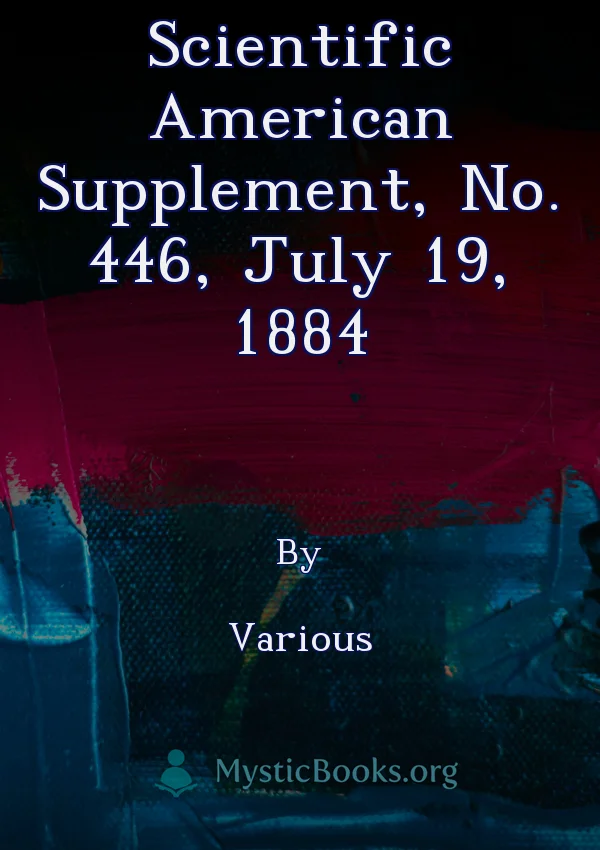
Scientific American Supplement, No. 446, July 19, 1884
by Various
'Scientific American Supplement, No. 446, July 19, 1884' Summary
The Scientific American Supplement, No. 446, published on July 19, 1884, presents a collection of short articles exploring the advancements of the era. It covers a spectrum of topics, showcasing the intersection of science and technology in the late 19th century. One article, "Pneumatic Malting", delves into a new method of utilizing air pressure for grain germination, showcasing the evolving techniques in food production. Another article, "Improved Hay-Rope Machine", demonstrates advancements in agricultural machinery, highlighting the mechanization of farming practices. The supplement also discusses the cutting-edge developments in telegraphy with "Automatic Fast Speed Telegraphy", a testament to the rapidly advancing communication technologies. The article, "Tin in Canned Foods", sheds light on the growing concerns surrounding the safety of canned food, discussing the potential impact of tin on food preservation. The article "Our Servants, The Microbes", a fascinating glimpse into the early stages of microbiology, explores the crucial role of microorganisms in diverse processes. It sheds light on the understanding of microbes in various aspects of human life, including their contribution to fermentation, decay, and disease, underscoring the growing awareness of their significance. This supplement serves as a snapshot of scientific and technological progress in 1884, offering insights into the ingenuity and ambition of the time.Book Details
Language
EnglishOriginal Language
Published In
Genre/Category
Tags/Keywords
Authors
Download eBooks
Listen/Download Audiobook
Related books

Post Haste by R. M. Ballantyne
Post Haste is a book by R. M. Ballantyne that tells the story of Phillip Mayland and his friend, George Aspel, who work for the British Post Office in...
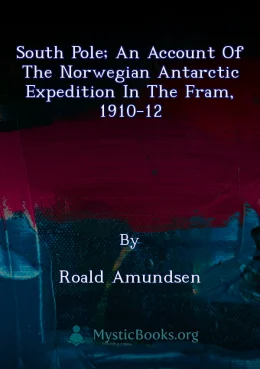
South Pole; an account of the Norwegian Antarctic expedition in the Fram, 1910-12 by Roald Amundsen
In contrast to Scott's South Pole expedition, Amundsen's expedition benefited from good equipment, appropriate clothing, and a fundamentally different...

Drei korte verhaole in 't Mestreechs by Alphonse Olterdissen
Drei korte verhaole in 't Mestreechs dialek.Eder verhaol gief 'ne klein inziech vaan de gebeurtenisse in Mestreech op 't leste vaan de 19de en 't vreu...

Mighty Animals by Jennie Irene Mix
A book about dinosaurs written for children. In short, easy to read chapters designed to keep the interest of juvenile readers.
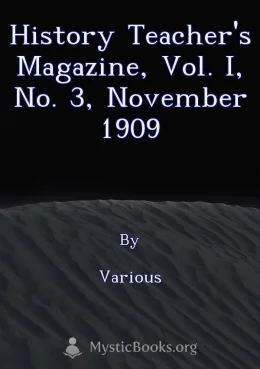
History Teacher's Magazine, Vol. I, No. 3, November 1909 by Various
The History Teacher's Magazine is a publication that is dedicated to providing information and resources to history teachers. It includes articles on...

The Romance of Polar Exploration by G. Firth Scott
The frozen wastes of the Arctic and Antarctic have long been a source of fascination and mystery. The Romance of Polar Exploration tells the story of...

Memoirs of Chateaubriand 1768 to 1800 by François-René de Chateaubriand
François-René de Chateaubriand's *Memoirs of Chateaubriand 1768 to 1800* delves into the early life of this prominent French writer, politician, and f...

English Costume by Dion Clayton Calthrop
Dion Clayton Calthrop's 'English Costume' is a detailed and comprehensive study of the evolution of everyday attire in England, spanning the 18th and...
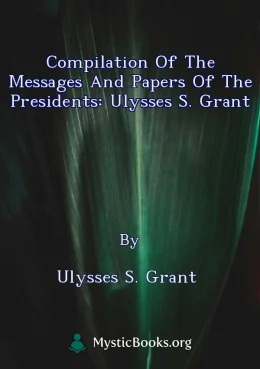
Compilation of the Messages and Papers of the Presidents: Ulysses S. Grant by Ulysses S. Grant
This volume, part of the multi-volume 'Compilation of the Messages and Papers of the Presidents', focuses on the presidency of Ulysses S. Grant. It pr...
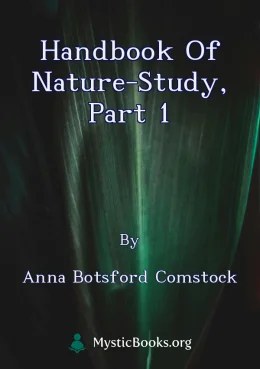
Handbook of Nature-Study, Part 1 by Anna Botsford Comstock
Comstock's *Handbook of Nature-Study* is a comprehensive guide for teachers and educators seeking to integrate the natural world into their classrooms...
Reviews for Scientific American Supplement, No. 446, July 19, 1884
No reviews posted or approved, yet...
